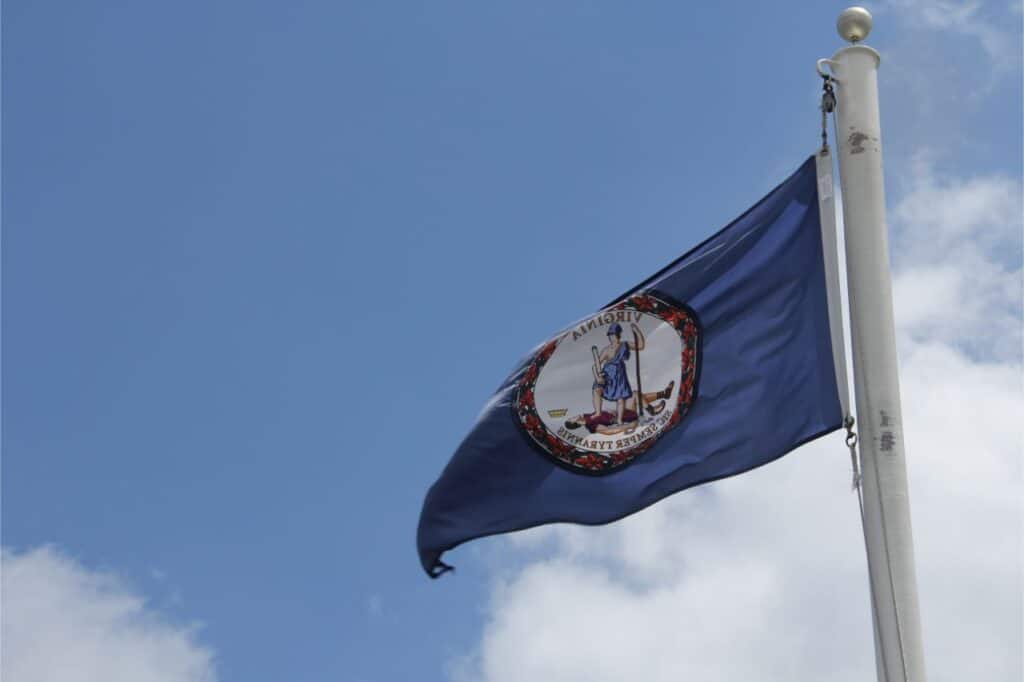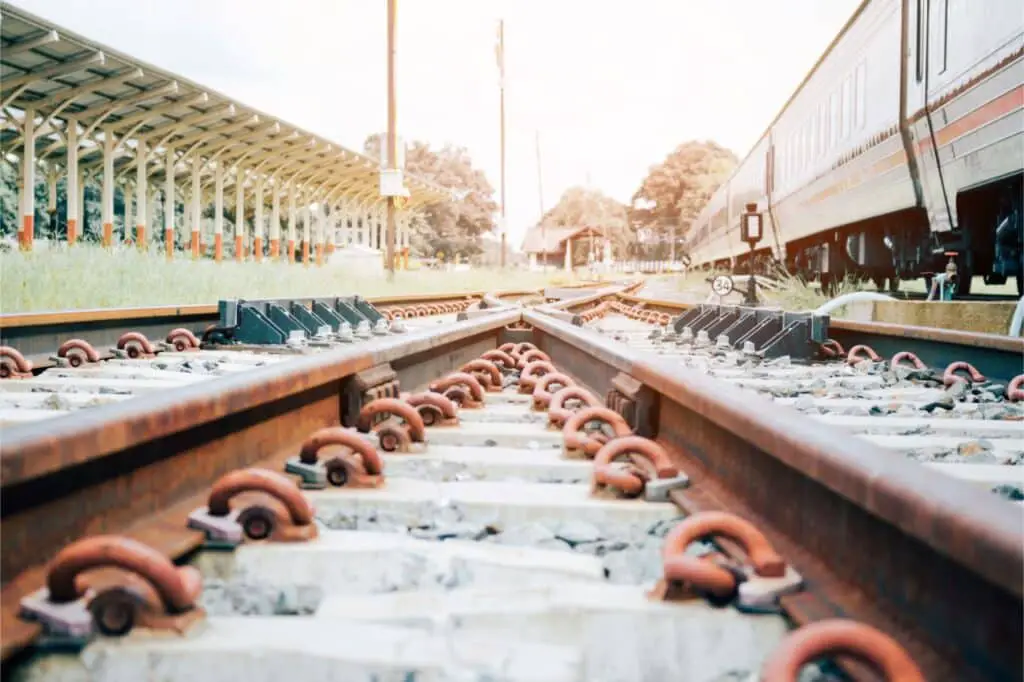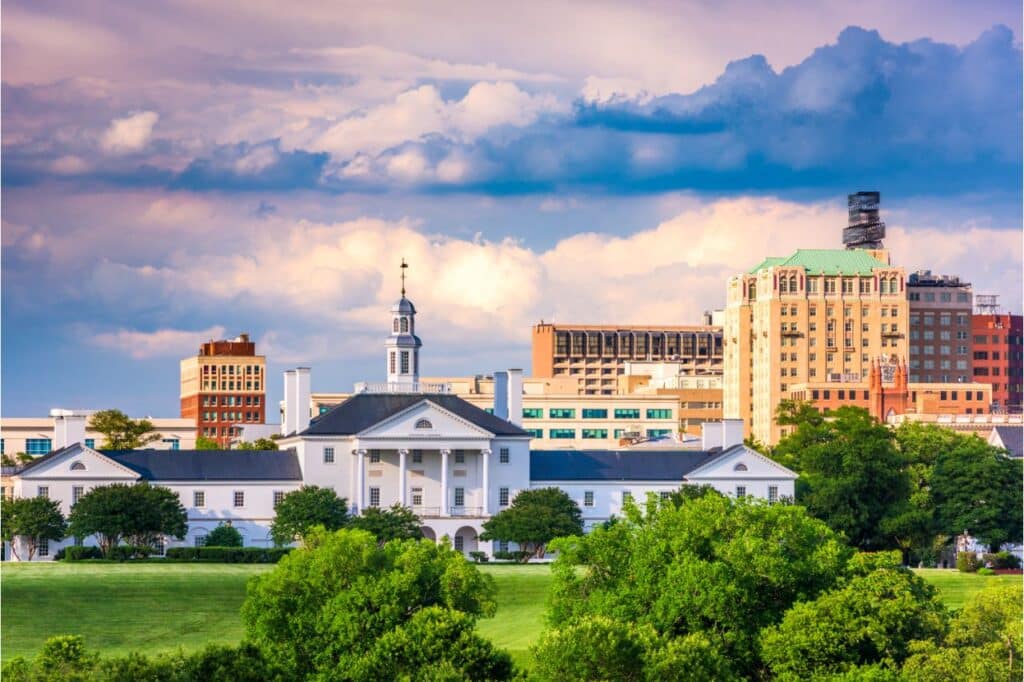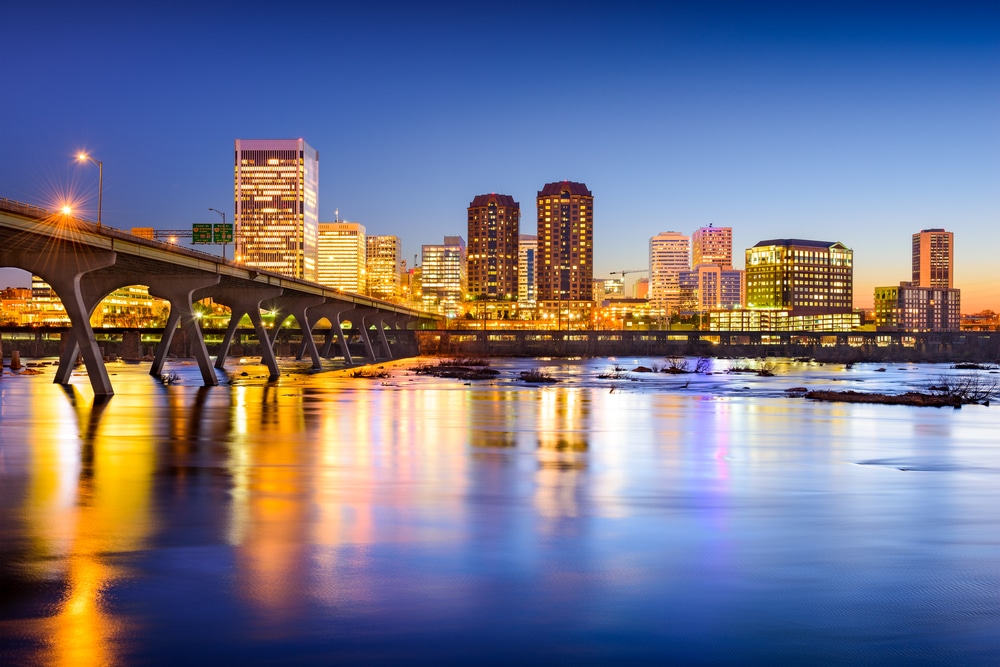Are you looking for railroad jobs in Virginia? You’ll be happy to know that there are a few opportunities for you. But, railroad jobs in Virginia may not be as extensive as in other states.

Most of Virginia’s freight rail lines are operated by Class I systems. This includes CSX Transportation and Norfolk Southern.
They account for 2,700 miles (more than half) of the state’s overall trackage. So, you’ll most certainly end up working for one of them.
There are no operational regional railroads in Virginia. But, on the other hand, the state does have a few shortlines.
Amtrack also operates in the state along with two other passenger trains.
All in all, freight railroads in Virginia total 3,214 miles of trackage. The state ranks 21st in the country’s overall freight milage.
The state also features similar Appalachian region landscapes. Tipple-to-tideway coal transport is incredibly abundant.
Furthermore, the Blue Ridge Mountains provide a series of arduous slopes. Virginia also has great coastline activities as the port of Norfolk is situated here.
The state is also a railroad fan’s dream as it has rich railroad history. It was once home to old tracks like the Atlantic Coast Line and Norfolk and Western.
These were incredibly instrumental in the growth and prosperity of Virginia. Fortunately, though, their legacy still lives on due to their Class I successors.
And overall, the railroad sector is a great industry to work for. So we’re here today to help you find railroad jobs in Virginia!
In this post, we tackle all the railroad companies you can apply for. We also briefly discuss the conditions and economic impact of the state’s railroads.
And finally, we cover some important tips and pointers for new railroaders.
Let’s get started.

4 Clear Economic Advantages of Rail in Virginia
Virginia’s rail system is a vital asset for the state. It is an effective way of transporting goods and people.
Railroads hold benefits that other means of transportation don’t have, this is mostly due to their scale.
Let’s explore the benefits:
1. Advantageous geographical positioning and easy access to global markets
Virginia’s location makes it convenient for trains to reach the eastern United States. It facilitates trade and commerce between businesses and ports.
For example, the I-95 Corridor of CSX Transportation runs across Virginia. This connects the eastern coastline cities, ports, and manufacturing districts.
The entirety of Virginia’s Amtrak passenger services is also served by this line.
Additionally, Virginia Railway Express train services use it as an entryway to Washington.
Another example is the north-to-south Crescent Corridor of Norfolk Southern. It serves markets through Memphsis, Orleans, and the Northeast.
Throughout Virginia, it operates in the Inland Port and the Front Royale. Amtrak routes also run in this route.
Another key line in Virginia is the Heartland Corridor, this connects the midwest to the Virginia port.
It also serves Hampton Roads and connects them to Chicago.
2. Capacity to ship tons of freight
Far more than be transported in a single rail car than in one vehicle.
For instance, 8 passenger railcars can carry over 240 passenger vehicles.
And 100 freight railcars equate to approximately 340 trailer trucks.
3. Reduced congestion, maintenance, and pollution of transportation systems
Railroads, on average, use four times less fuel than trucks. Rail freight also transport creates 75% less greenhouse gas emissions than vehicle freight.
Freight railways in Virginia can eliminate 7.1 truckloads off the highways yearly.
As a result, there is less wear and tear and the need for road repairs.
4. Creates more jobs and offers competitive salaries and better lifestyles
Finally, the railroad can create hundreds of new employment. In 2017, railroad jobs totaled nearly 9,000 individuals. And nationwide, there were 1.1 million freight employees! And, this doesn’t include Amtrak!

Working in the Railroad Industry: Things To Consider
Are you freshly coming into railroading? This part of the post might come in handy for you.
You see, railroading isn’t for everyone. Railroading is often seen as exciting and entertaining by the general public. This can be true.
However, the sector has its own set of hurdles that aren’t for the faint hearted.
A class I railroad job can be physically and mentally demanding. They operate 24/7. As such, some employees work longer shifts, 12 hours at most.
You might also encounter erratic schedules. You can work on the weekends and public holidays if needed.
In other words, be ready for a major lifestyle change. You’ll have to spend more time away from home than you ever thought possible.
But, class I jobs are among the highest paid in the industry. And all of this comes with additional further benefits and retirement plans.
Because of this, the value of the sacrifice can be very, very worthwhile.
You also get years of knowledge and advancement opportunities. If you put forth the effort, you’re more likely to get promoted.
A few years in and you may be earning six figures. Here’s a list of the highest-paying railroad jobs.
Shortlines in Virginia are a good option if you don’t want to work longer hours. However, expect that their wages don’t measure up to class I jobs.
These are some of the reasons why people quit or don’t want to work on the railroad. At the end of the day, it’s all up to you.
Railroading requires a broader view and an open mind. A career in this field will definitely not provide you with “quick cash.” It’s a well-respected and highly-regarded worthwhile career.
Now, let’s take a look at your choices for railroad jobs in Virginia.

Class I Railroad Jobs in Virginia
CSX Transportation
A staggering 21,000 miles of trackage make up this network’s whole trackage. CSX Transportation is also the third-highest earning Class I. As of 2022, its revenue has topped over 13 billion dollars.
CSX Transportation has been around since the 1820s. Currently, it serves more than 20 states and two Canadian provinces.
And in 2015, the company spent about 42 billion on its Virginia network. To add to that, they also invested over 1 billion worth of freight cars and other equipment.
This network hauls a broad spectrum of commodities. This includes automobiles, Agri products, and coal. In Virginia, it mostly carries coal, consumer goods, petroleum, and aggregate.
And finally, CSX Transportation has four facilities within the state of Virginia. This includes:
- Rail yards – Newport News, Acca, Fulton, and Clifton Forge
- Intermodal transport – Portsmouth
- Transflo facilities – Richmond and Fredricksburg
- On-dock railway operations – Virginia International Gateway
Apply for CSX Transportation jobs in Virginia by clicking here.
Norfolk Southern
This class I network is one of the most prominent in North America. They’re also well-known for hauling industrial goods, coal, and their intermodal network.
Overall, Norfolk Southern operates 20,000 miles of trackage. In Virginia, they run 1,990 miles of track. They also connect with six shortlines in the state.
View their current job openings by visiting their website. Click here.

Class III Shortline, Terminal, and Switching Railroad Jobs in Virginia
Buckingham Branch Railroad
The Buckingham Branch Railroad, or BB, operates 280 miles of trackage in total. Its routes run through the historic lines in Central Virginia. They also do interchanges with the two class I railroads.
This shortline has been around since the 1980s.
Presently, it services the twins of Richmond and Clifton Forge. It also has two disconnected lines in Richmond’s east and south areas.
Learn more about them and their employment opportunities through their website. Click here.
Chesapeake & Albemarle Railroad
Initially, the Chesapeake & Albemarle was a part of Northfolk Southern’s south network. Back then, its route spanned Albamarle South, Plymouth, and Mackeys Ferry. RailAmerica bought the present railroad in 2000, ten years after it started operations.
Later on. the Genesee & Wyoming Railroad acquired them. The company decided to reduce its track’s speed to 25 mph. Until today, G&W still owns and operates this shortline railroad.
Additionally, they to interchanges with the two Class I networks. They mostly carry chemicals, rocks, cement, and lumber.
All in all, the Chesapeake & Albemarle Railroad operates 68 miles of trackage.
Visit the G&W to learn more about their railroad jobs in Virginia. Click here.
Commonwealth Railway
The Commonwealth Railway or CWRY operates a total of 16.5 miles of trackage. Their tracks run over an old line of the Norfolk, Franklin, and Danville Railway.
Its routes stretch from Suffolk and Portsmouth, with headquarters in Wilroy.
This is also another Genesee & Wyoming-owned shortline. On top of this, they also participate in the Thoroughbred Shortline Program.
Visit the G&W to learn more about their job opportunities. Click here
Durbin & Greenbrier Valley Railroad
This shortline railroad company operates the present Shenandoah Valley Railroad. This shortline dates back to the 1990s.
It runs through the old Baltimore & Ohio line in the Pleasant Valley area.
Learn more about the shortline by clicking here.
North Carolina & Virginia Railroad
Another G&W-owned shortline on this list is North Carolina and Virginia. It is also marked as the NCVA.
This shortline dates back to the 1980s. It operates on an old Seaboard Coast Line Railroad line. It travels to Boykins and Tunis, with headquarters in North Carolina.
The North Carolina & Virginia Railroad mostly carries steel, grain, and chemicals.
Visit the G&W to learn more about their railroad jobs in Virginia. Click here.
Norfolk & Portsmouth Belt Line Railroad
This is a class III terminal shortline railroad. The Norfolk and Portsmouth Belt Line Railroad has been around since the 1890s. And presently, they are owned by both CSX Transportation and Norfolk Southern.
They primarily service port requirements of Portsmouth, Norfolk, and Chesapeake.
Learn more about them by clicking here.
Virginia Southern Railroad
The Virginia Southern or the VSRR is a Genesee & Wyoming-owned shortline.
Overall, this shortline totals 75 miles of trackage.
They mostly service Oxford in North Carolina and Burkeville in Virginia.
Visit the G&W to learn more about the company. Click here.

Passenger Railroad Jobs in Virginia
Potential passenger railroad employers in the state include:
Amtrak
Hampton Roads Transit (Tide Light Rail)
Virginia Railway Express (VRE)
Kickstart Your Railroad Career With These Railroad Jobs in Virginia!
There you have it. So far, you’ve seen that you’ve got relatively good options for railroad jobs in Virginia. Your highest chances fall on the two Class I railroads in the state.
You also have a few shortlines at your disposal. And lastly, you can consider Amtrack and the other two passenger train lines too.
Job hunting won’t always be smooth-sailing. It may take some time to find a job that meets your needs. And sometimes, the job market may be quite competitive.
Remember, some companies also take longer to respond to job applicants.
But, don’t let this discourage you. Be positive and keep an eye on the big picture.
We can, however, further help you broaden your options. We’ve got a state-by-state list of railroad jobs. Railroad Jobs.
And if you’re interested in learning more about the industry, keep an eye on our website. We cover many different subjects on railroading.
We’ve reached the end of railroad jobs in Virginia and hope you have a successful job search and a railroad career!
Frequently Asked Questions
What was the first railway built in Virginia?
The first railway in the state goes back to the 1830s. This was the Petersburg Railroad. During this time, it linked Petersburg to North Carolina. In 1833, it had a total of 62 miles of trackage.
After 64 years of service, they merged into the system of the Atlantic Coast Line. Since then, it became the main line that linked to Richmond.
And presently, it is a part of class I CSX Transportation’s network.
How many railroads are there in Virginia?
There are a total of 8 freight rail networks and three passenger trains in Virginia.
Where does Amtrack travel in Virginia?
Virginia has a large number of Amtrack stops. This includes routes going to the south, midwest, and northeast. They also have a unique Auto Train, that runs through Florida and Lorton. Learn more about Amtrack’s Virginia routes by clicking here.
Does rail connect Virginia to Washington?
Yes. The Virginia Rail Express offers weekday routes to Washington, D.C. Learn more about it by clicking here.

